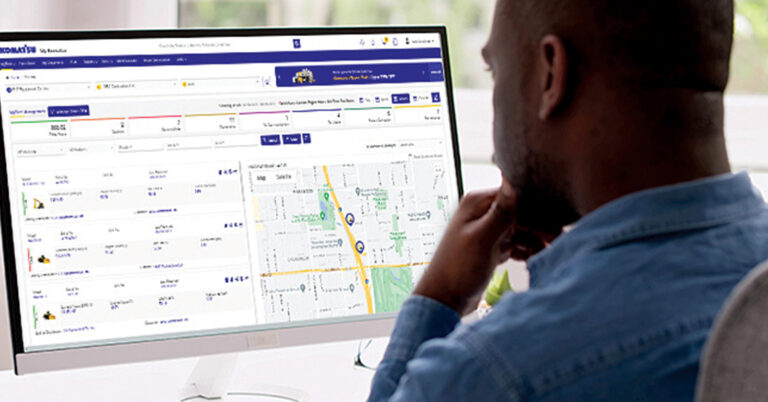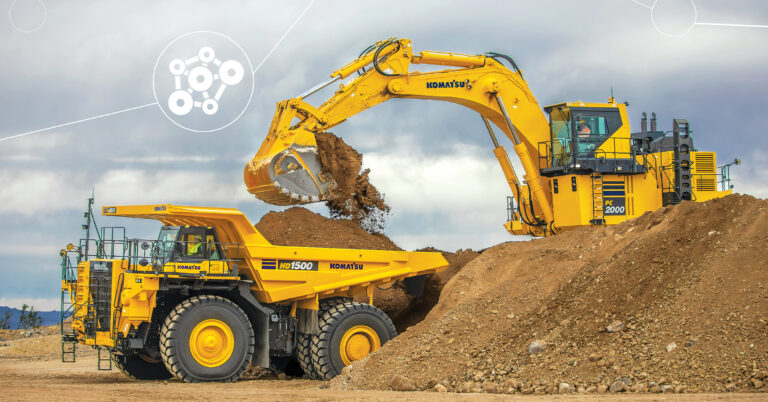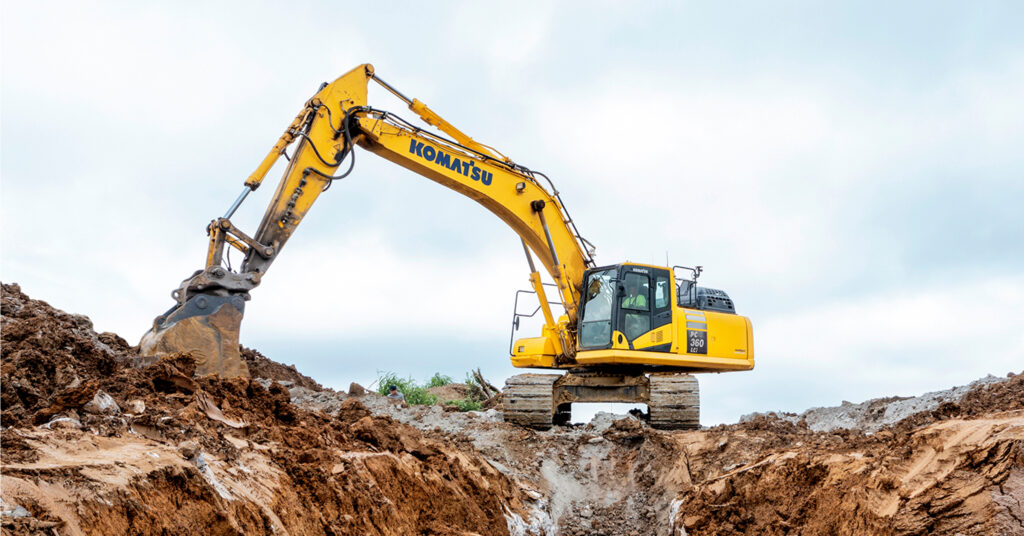
A Decade of Data
The 10th anniversary of IMC confirms that users have saved time, lowered costs with integrated GPS grade control

In 2013, Komatsu changed the landscape of the construction equipment industry with the introduction of the first Intelligent Machine Control (IMC) dozer that provided fully automatic blade control from rough cut to finish grade. The D61i-23 made an immediate impact, and a decade later, there is plenty of evidence that IMC equipment has cut costs significantly for customers and increased operator efficiency.
“Providing that semi-autonomous functionality in the dozers from the factory was unheard of in the industry,” said Andrew Earing, Director of Tracked Products and Technical Service for Komatsu. “It was revolutionary. The integrated GPS grade control gave operators the ability to move dirt faster and more accurately with fewer stakes and reduced surveying costs. We found that novice operators saw their skill set grow rather quickly when using Intelligent Machine Control, because the semi-autonomous operation is a learning tool that is teaching them proper operation. Experienced operators found that it helped them work more comfortably throughout the day, and we found those operators willing to stay in the workforce a little bit longer because of the more enjoyable experience that the technology provided them.”
Upgrades
The D61i-23’s success set the stage for additional models, as well as IMC excavators that go beyond simple guidance to semi-automatically limit over-excavation and trace a target surface. Once the target elevation is reached, no matter how hard an operator tries to move the joystick to lower the boom, the excavator doesn’t allow it. This reduces wasted time and the need for expensive fill materials.
Liesfeld Contractor, based in Richmond, Va., was the first company to adopt a D61i-23 dozer in 2013. It has since upgraded its fleet multiple times and currently has 10 IMC dozers and three IMC excavators, including some IMC 2.0 models with advanced features that help further increase productivity. The IMC 2.0 dozers have proactive dozing control, which enables even less-experienced operators to cut/strip automatically from existing terrain, as well as lift layer control, tilt steering control, and quick surface creation.
The IMC 2.0 excavators feature bucket angle hold control, which automatically holds the bucket angle to the design surface during arm operation. It’s less fatiguing for operators, so they are more productive, and it produces a better finish-grade surface. Plus, auto tilt bucket control assists operators by aligning the bucket parallel with the slope, so that finish grading can be accomplished without needing to align the machine with the target surface.
“We have come to rely on IMC, as it puts a lot of the information about the job right in front of the operator on the monitor,” said Kelby Morgan, Operations Manager at Liesfeld Contractor. “The more we can put on the job site, the better off we are. We can get jobs done with fewer worker hours. We’re less reliant on surveying. Everything combined makes us more efficient. I think it gives us an advantage over those who don’t use it.”
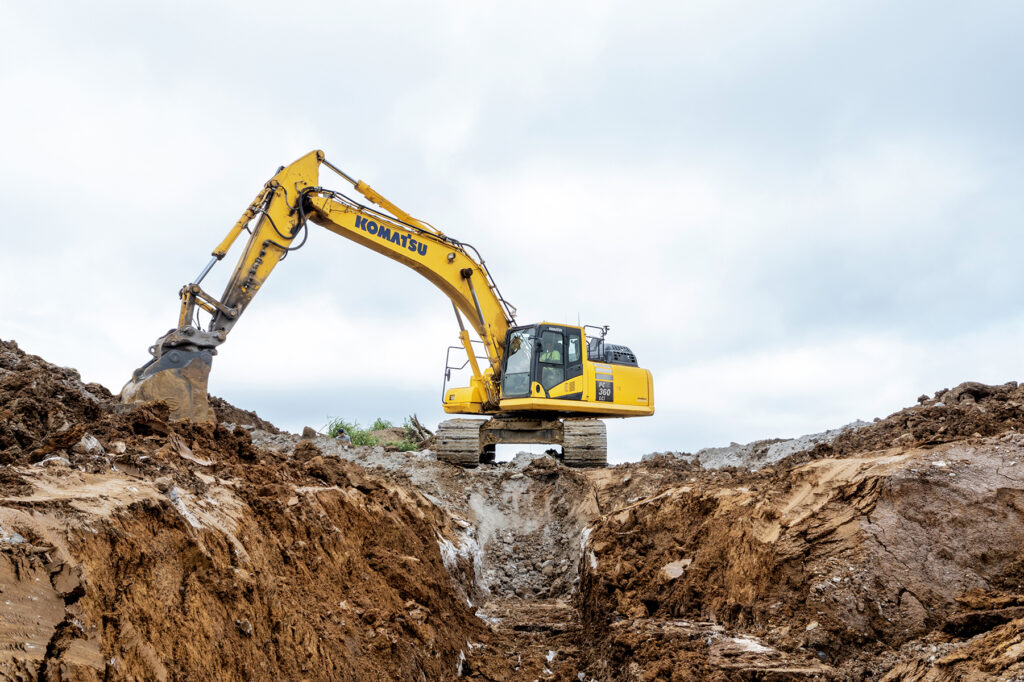
Increased efficiency, lower costs
Wisconsin-based Soper Companies performs earthwork and various other services with a sizable fleet of equipment that includes several Komatsu IMC excavators and dozers.
“We’re committed to incorporating technology into our practices — from having our own survey techs who lay out jobs to digital plans to using the latest innovations in grade control — because we see increased efficiency and overall lower costs,” said Vice President Ethan Engel. “Our labor expenses are down because we don’t need grade checkers, and we’re moving material faster and more accurately.”
Engel praised the Komatsu PC290LCi-11 IMC 2.0 excavator for its ability to follow complex design plans in foundation and utility digs.
“It’s been spot-on, and once you hit target depth on the model that’s been uploaded to the excavator, it won’t let you dig any deeper,” said Engel. “Operators hit final elevation without over-digging, so we are not replacing dirt with expensive backfill. In turn, that reduces trucking, lowers fuel consumption, and helps profitability. We are seeing similar savings with the dozers. Our operators get to grade faster with less material movement.”
Frank A. Rogers & Company Inc. (FARCO), a general contractor in Arkansas, saw similar results when an operator used a D39PXi-24 IMC dozer to complete a 52,000-square-foot commercial building that included 4 acres of pads. According to President Taylor Meharg, it saved approximately 10% to 20% on costs compared to a similar project the company did with rental equipment. FARCO has also found that the D39PXi-24 cuts down on surveying time.
“We can do most of our surveying with one piece of equipment,” said Meharg. “The level of accuracy you get with IMC is an upgrade over traditional equipment, and I think even the best operators in our company would agree with me that it makes their job easier and helps get the project done faster.”
Texas-based Baker & Company Construction LLC realized the benefits of IMC when it compared a GPS-integrated dozer to a competitive model with an aftermarket system.
“Komatsu was the clear winner,” stated President Brad Baker. “Operation was smooth, and the fact that there are no masts or cables to deal with made it a no-brainer. We now have four IMC dozers that we rely on heavily for stripping to finish grade. Our productivity is higher, and our costs are reduced because those dozers allow us to move material once and more efficiently. Operators know exactly where to place, cut and grade because the plans are in the dozer, and it’s automatically doing what’s needed in relation to reaching finished elevation. They have cut our mass grading time by roughly 50%.”
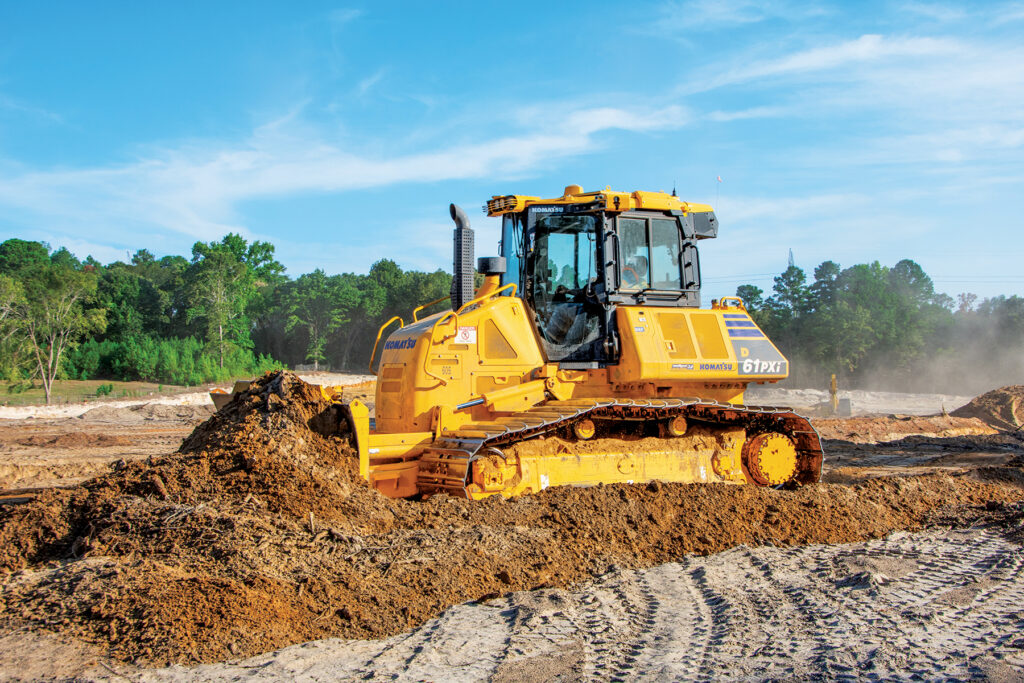
Specialty situations
Komatsu IMC technology works in specialty situations as well as traditional earthmoving. ABR Construction Inc., which is headquartered in Nicholasville, Ky., equips its PC360LCi-11 excavators with rock grinders.
“Using a grinder with the IMC technology allows you to achieve grade without over-digging or misalignment because misaligning a rock trench can be a very expensive mistake,” explained Project Manager Ben Troxell.
ABR Construction also uses IMC dozers to complete everything from stripping to finish grade. The company gets further versatility by outfitting the dozers with rippers.
“We were constantly replacing stakes, and now, the whole site plan is in the dozer itself,” said President Christian Ach. “We have less downtime, so we view IMC as a time-saving tool that makes our operators more functional. Now, they produce eight to 10 hours a day rather than worrying about knocking down stakes.”
“I feel as though our overall efficiency has gone up 100% since we aren’t wasting time staking, and that also frees up project managers to do other tasks,” noted Senior Project Manager Darrin Darnell.
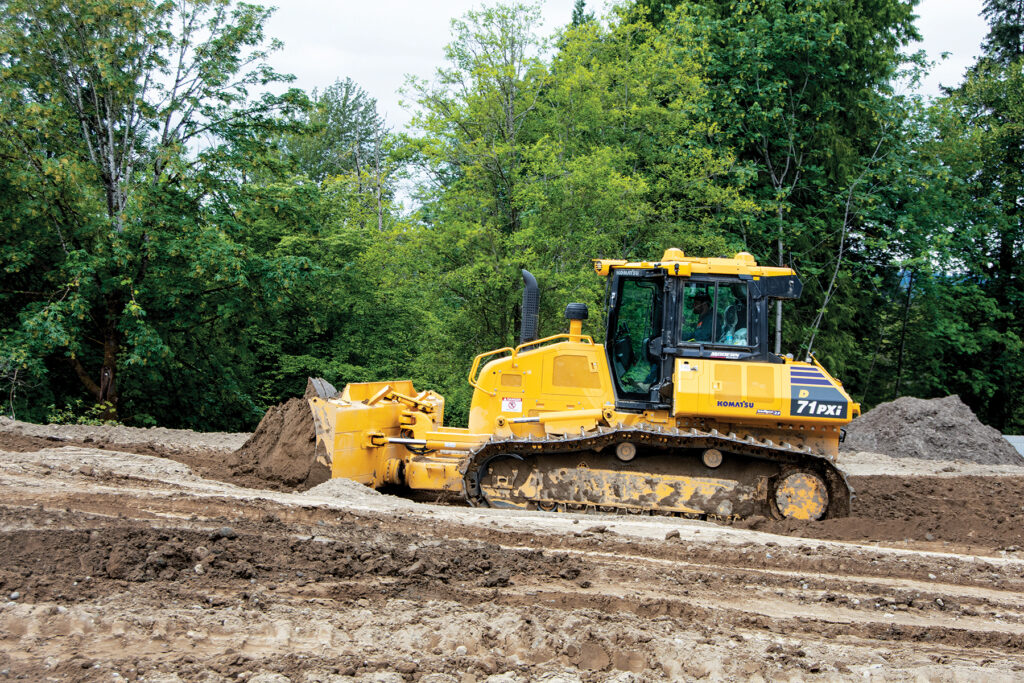
Continuing to build
According to Earing, customers across North America — and the world — have seen similar results with IMC equipment.
“The original vision for IMC was to provide a solution that all of our customers can benefit from,” said Earing. “We wanted to make this available, scalable and really intuitive enough that everyone can use it, no matter the size of the contractor. Ten years later, we can pointedly say that we believe we achieved that and much more. We’re continuing to build on it, and with customer input, we are seeing applications for IMC machines that we hadn’t thought of at the beginning.”
*The opinions expressed here are from the end users who are quoted. The results described herein are those of these end users under certain conditions. Your results may vary.

